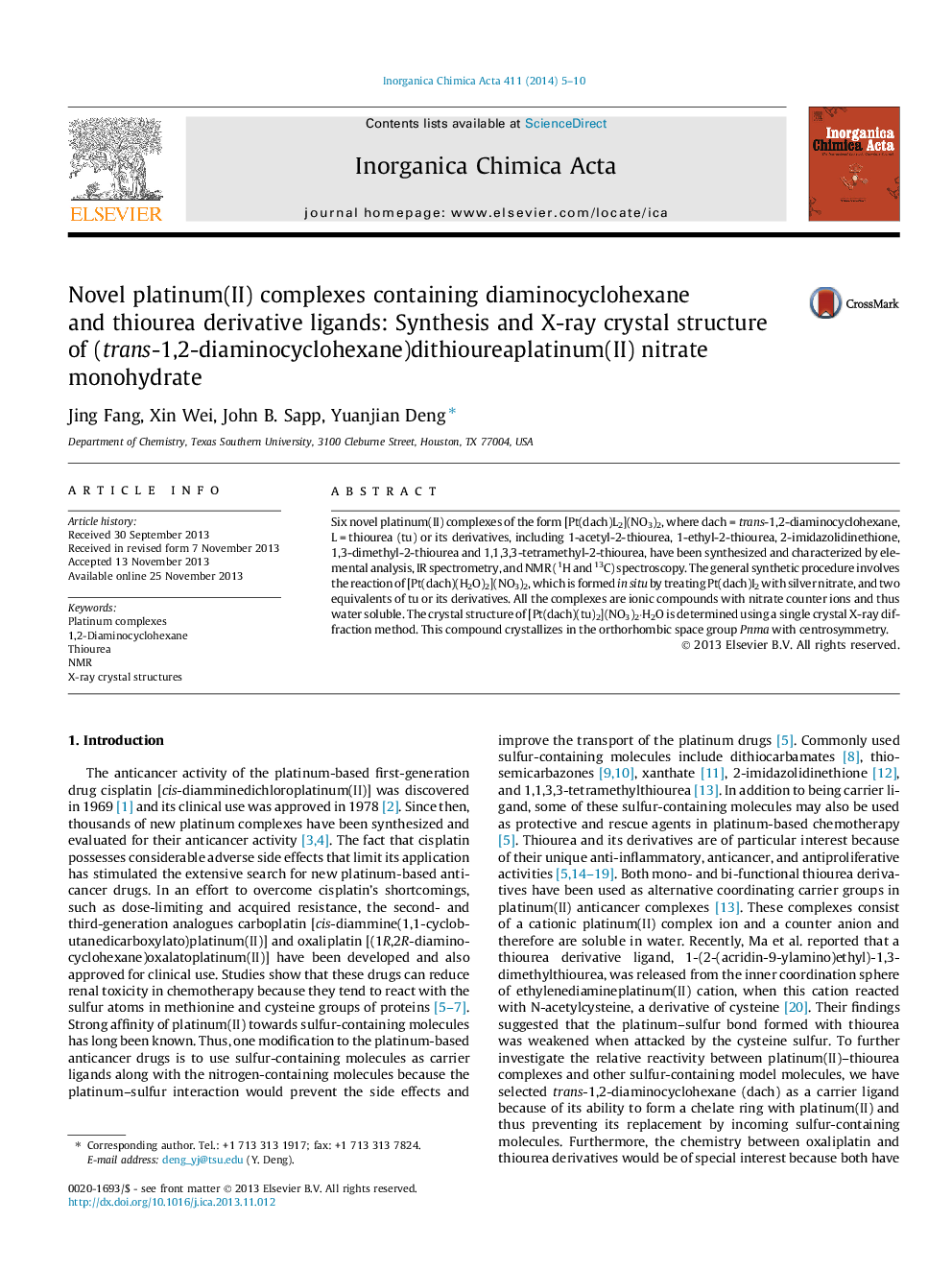| Article ID | Journal | Published Year | Pages | File Type |
|---|---|---|---|---|
| 1306963 | Inorganica Chimica Acta | 2014 | 6 Pages |
•Six [Pt(dach)(L)2](NO3)2 type complexes (L = thiourea derivatives) are synthesized.•Each complex is characterized by elemental analysis and spectroscopy (NMR & IR).•All the complexes are water soluble.•Upon complexation, the CS bond order decreases and the C–N bond order increases.•The crystal structure of [Pt(dach)(tu)2](NO3)2·H2O is determined.
Six novel platinum(II) complexes of the form [Pt(dach)L2](NO3)2, where dach = trans-1,2-diaminocyclohexane, L = thiourea (tu) or its derivatives, including 1-acetyl-2-thiourea, 1-ethyl-2-thiourea, 2-imidazolidinethione, 1,3-dimethyl-2-thiourea and 1,1,3,3-tetramethyl-2-thiourea, have been synthesized and characterized by elemental analysis, IR spectrometry, and NMR (1H and 13C) spectroscopy. The general synthetic procedure involves the reaction of [Pt(dach)(H2O)2](NO3)2, which is formed in situ by treating Pt(dach)I2 with silver nitrate, and two equivalents of tu or its derivatives. All the complexes are ionic compounds with nitrate counter ions and thus water soluble. The crystal structure of [Pt(dach)(tu)2](NO3)2·H2O is determined using a single crystal X-ray diffraction method. This compound crystallizes in the orthorhombic space group Pnma with centrosymmetry.
Graphical abstractThis graphical abstract shows the view of a portion of the hydrogen bonding network between the cation ([Pt(dach)(tu)2]2+), anions (NO3-), and solvent (H2O).Figure optionsDownload full-size imageDownload as PowerPoint slide
